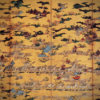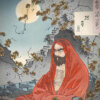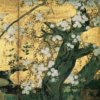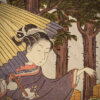Mizukami Taisei: A Master of Bird-and-Flower Painting Who Loved the Peaceful Four Seasons
Chrysanthemum Flowers on a Woven Fence
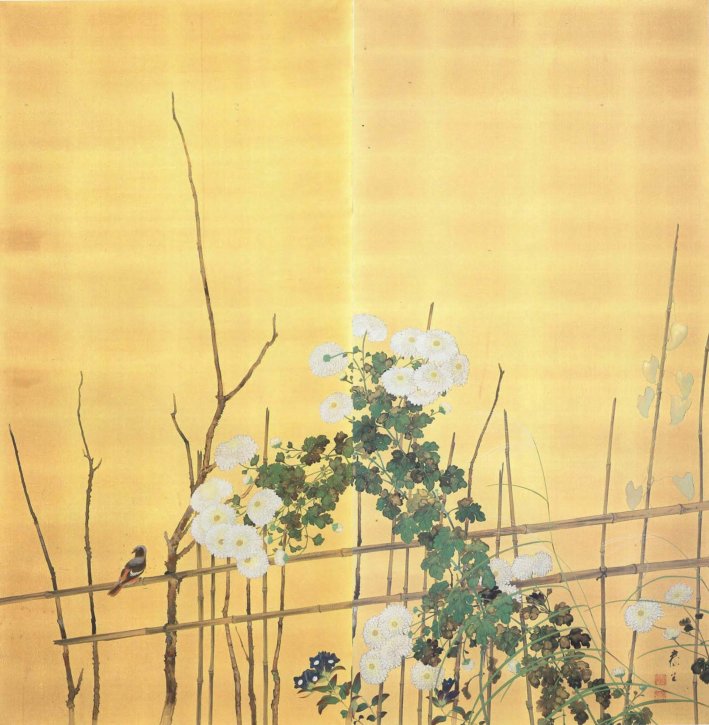
Mizukami Taisei was born in 1882 in Fukuoka prefecture. After graduating from the Tokyo Fine Arts School’s program of Japanese Painting, he studied under Terasaki Kogyō and aspired to exhibit his works at Bunten exhibitions. His first work to be selected was ‘Kiri (Paulownia)’ at the seventh Bunten exhibition, held in 1913. Despite following his master’s style, the artwork was a tour de force with its bold lines and the elegant presence of paulownia flowers and the petals on the ground, demonstrating his cunning artistic talent. Although ‘Ryukyū no Hana (The Flowers of Ryukyū,)’ exhibited at the eighth Bunten exhibition, also drew inspiration from his master, the painting powerfully captures the patterns of tropical and colorful flowers as if to embody Mizukami Taisei’s vibrant passion as a young man. His flamboyant style was further defined in his 1915 piece, ‘Karafuto (Sakhalin.)’ This bird-and-flower painting includes various types of flowers and trees, giving it a decorative and splendid style with a charm similar to that of the Rinpa school paintings. Taisei won the second prize for this painting. As he went on to exhibit another work from Sakhalin the following year, it is almost certain that he traveled to Hokkaidō and Sakhalin around this time. He did not exhibit his works at the Bunten and Teiten exhibitions for a period of time, but presented a highly realistic bird-and-flower painting titled ‘Tsuyuake no Koro (Around the End of the Rainy Season)’ at Teiten’s fourth exhibition in 1922, and was granted the right to exhibit his works without undergoing the selection procedure in 1928. His expression of birds and flowers became dominated by gentle and sentimental touches in the Shōwa period as his passion from his early years calmed, and it seems that Taisei’s expressions never exceeded his previously adopted decorative style. It is likely that the highly militant climate of that time-limited the society’s capacity to create space for Mizukami Taisei, a bird-and-flower painter. Moreover, perhaps as a man who loved the peaceful four seasons, he did not wish to change his themes according to the trend. Without much participation in the art scene after the war, he died in 1951.
This artwork is painted as if to make the audience feel the deep autumn through its overflow of blooming chrysanthemum flowers on the gold folding screen. A Daurian redstart, a bird representative of the autumn season, is seen resting its wings. Below the center of the screen, Japanese gentian flowers can be seen in a vibrant shade of bluish purple. The painting successfully conveys Mizukami Taisei’s aptitude for painting as an artist who specialized in bird-and-flower painting. As he would walk outside while sketching his subjects, it is possible that these chrysanthemum flowers blooming by the fences are based on impressions of the things he saw.
Mizukami Taisei was recommended as a committee member of Teiten in 1926. The world of bird-and-flower paintings, having captured the raw excitement that is felt from the nature of the four seasons in detail throughout time, is suggestive of a style that is representative of Nihon-ga paintings from the Taishō and Shōwa period.


